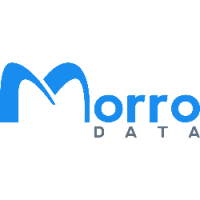Can Your Business-Critical Data Survive a Disaster?
Can Your Business-Critical Data Survive a Disaster?
Avoid Data Loss from Natural Disasters
Early this year, the severe winter storms sweeping across the United State lead to a power crisis. In 2020, a catastrophic fire season in California caused 4 million acres to burn. I can’t help but think that there’s a part of the story that’s being overlooked. The human toll is, of course, the most concerning, and the news has rightfully focused on the cleanup and rebuilding, as thousands are dealing with severe damage to, or complete loss of, their homes. But I also think about the hundreds of small and mid-sized businesses that have also experienced significant losses.
Data Backup Plan
Customer and company data is the lifeblood of most businesses. If it’s lost, the company’s continued survival will be difficult, at best. Yet studies show that over 20 percent of all small businesses do not keep copies of their data – on-site, where natural or other site-wide disasters can destroy the business in an instant. No matter where your business resides, it is located in the path of natural disasters. As a California native, I have to include earthquakes or fires in my disaster plan. Business owners in other parts of the country need to consider hurricanes, tornadoes, and other natural disasters. Floods are possible throughout most of the country. And, of course, all of us are vulnerable to fires, regardless of location.
So ask yourself,
- “Do I have a storage and backup strategy that truly protects my business-critical data, in the event of a site-wide disaster?” Before you answer, consider how many copies exist of your data.
- How many types of media is it on?
- Where are these copies located?
- Are any of them offsite?
- Does it adhere to a comprehensive 3-2-1 backup strategy?
- If you lost your primary data, whether from a disk or hardware failure or from a natural disaster, how long would it take you to recover your data and be up and running again?
A NAS Is Not Enough
As harsh as it may sound, the reality is that if you only keep one copy of your business-critical data, or if the original and backup reside in the same physical location, your business is at serious risk. Until you have a continuously-updated copy of your data stored at an offsite location – whether at a colocation facility or in the cloud – a site-wide disaster can destroy everything you’ve worked so hard to build. And if you think about it, this is truly the easiest business risk to safeguard! Whether you approach the solution by using cloud storage or by replicating it to an offsite location, you can sleep easier knowing that your data is truly protected, regardless of what happens.
So as we approach the height of wildfire season over the next few weeks, and the risk of the next hurricane, earthquake, or tornado is ever-present, do yourself and favor and take action on your disaster recovery plan right now. It doesn’t have to be complex, and it really doesn’t have to cost a lot! But if and when the next natural disaster hits, you’ll be glad you took care of it.
